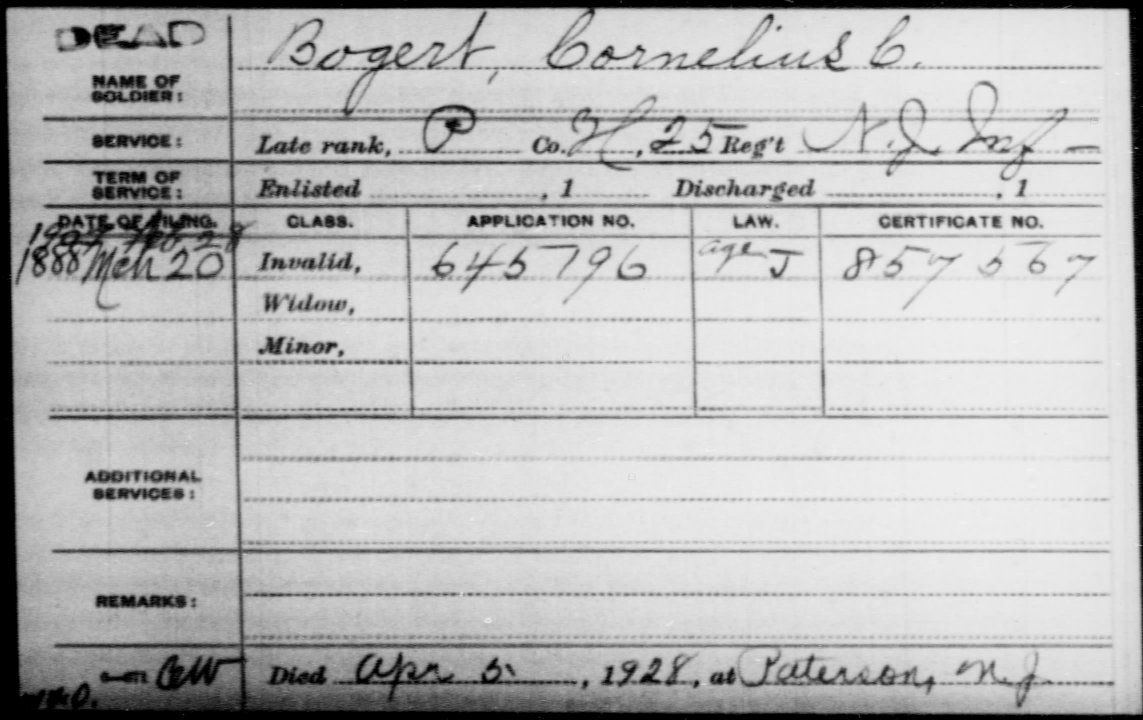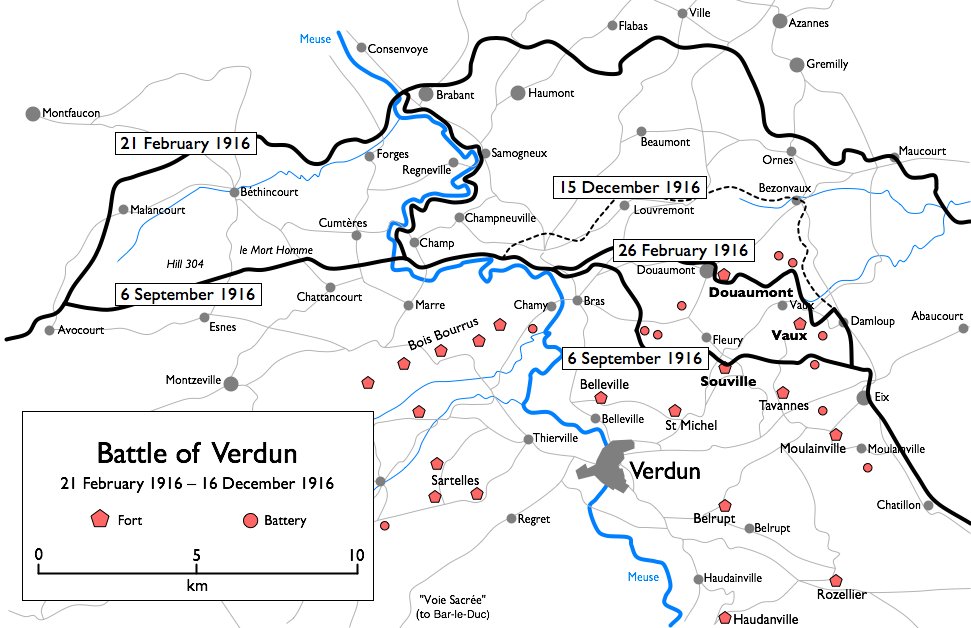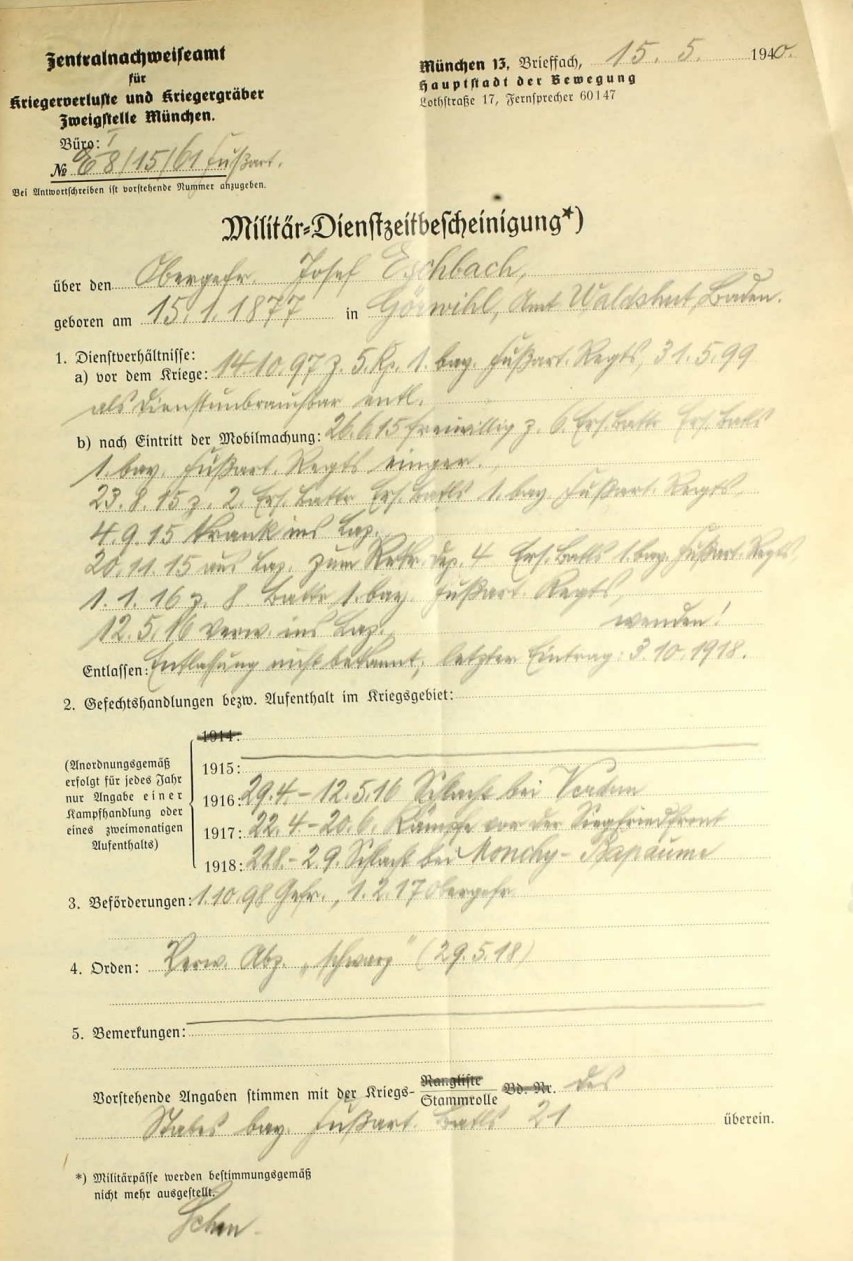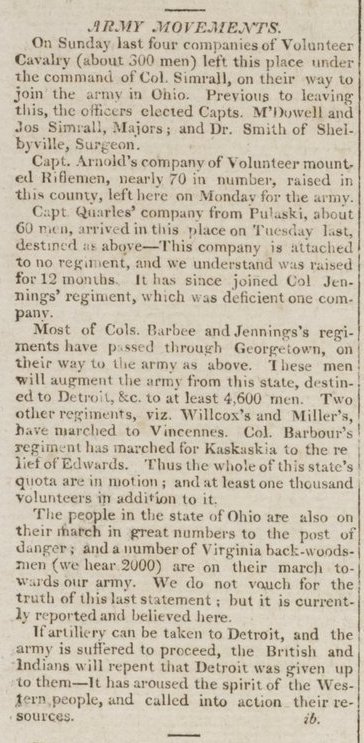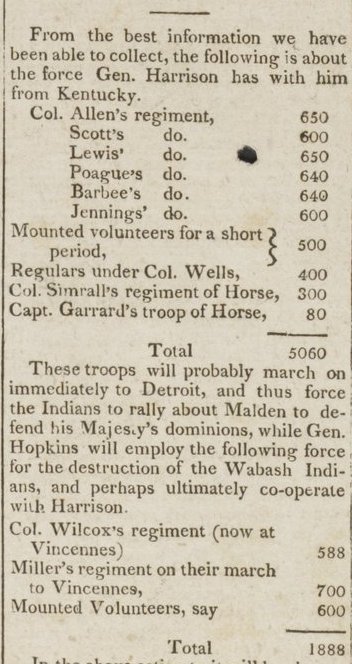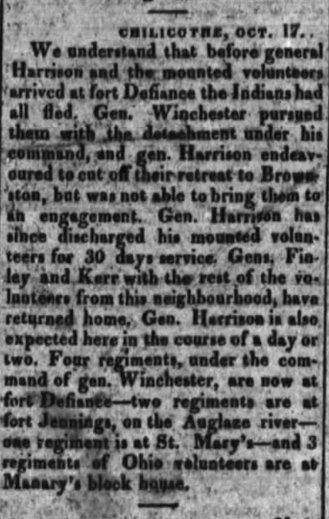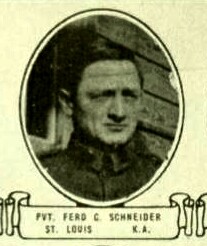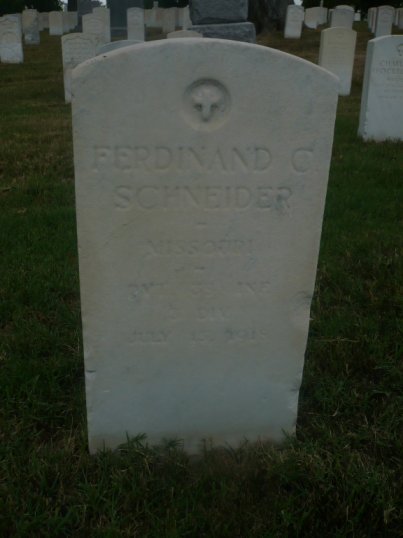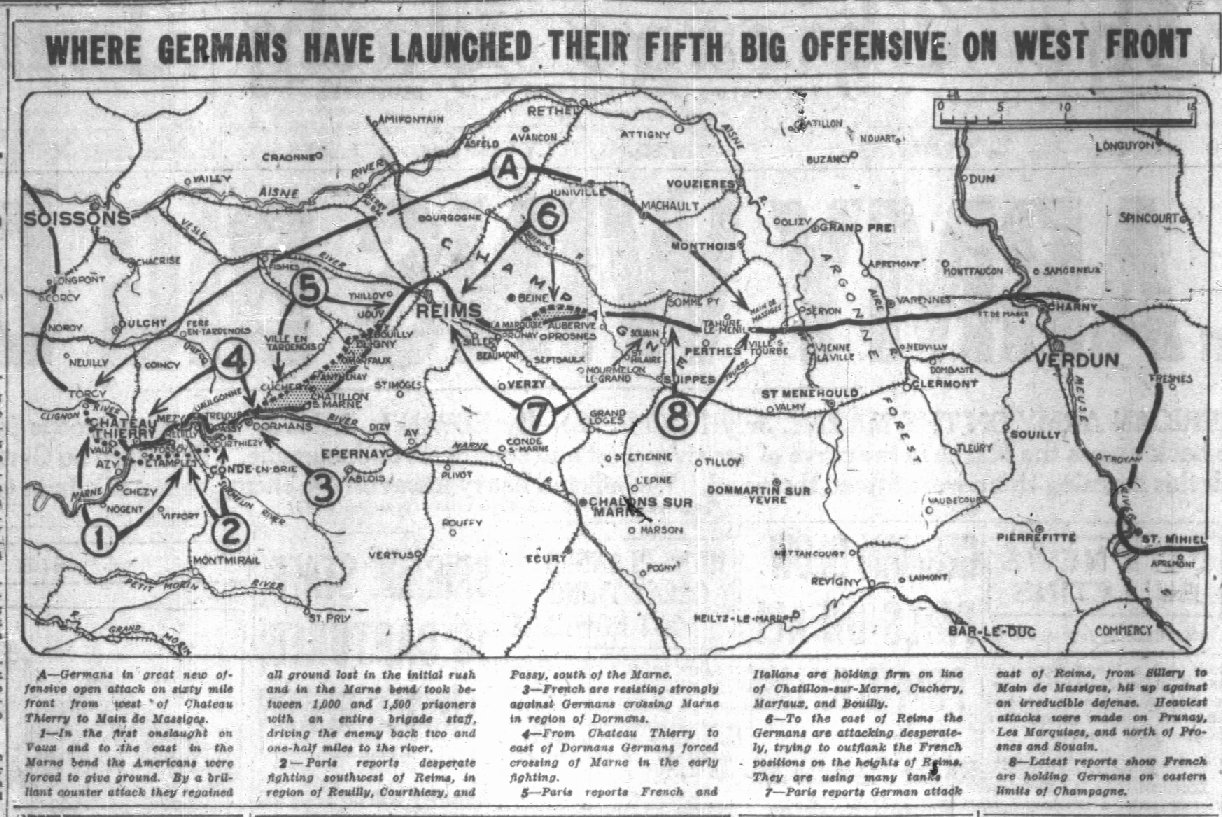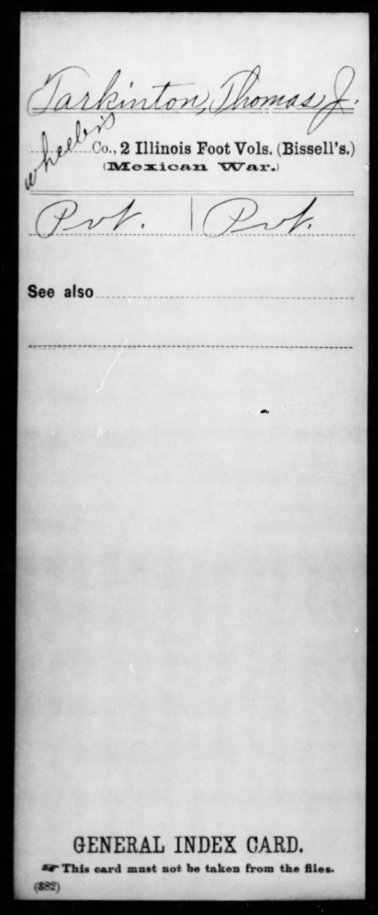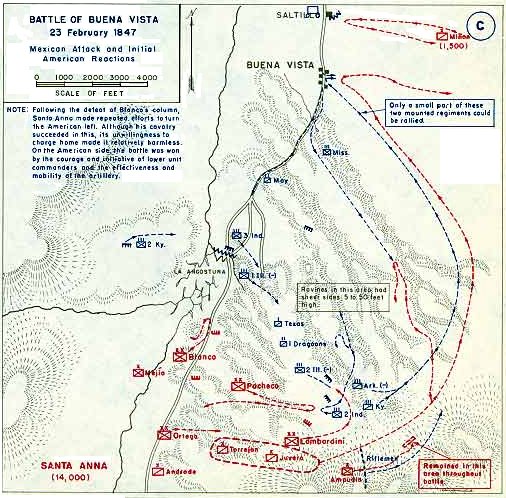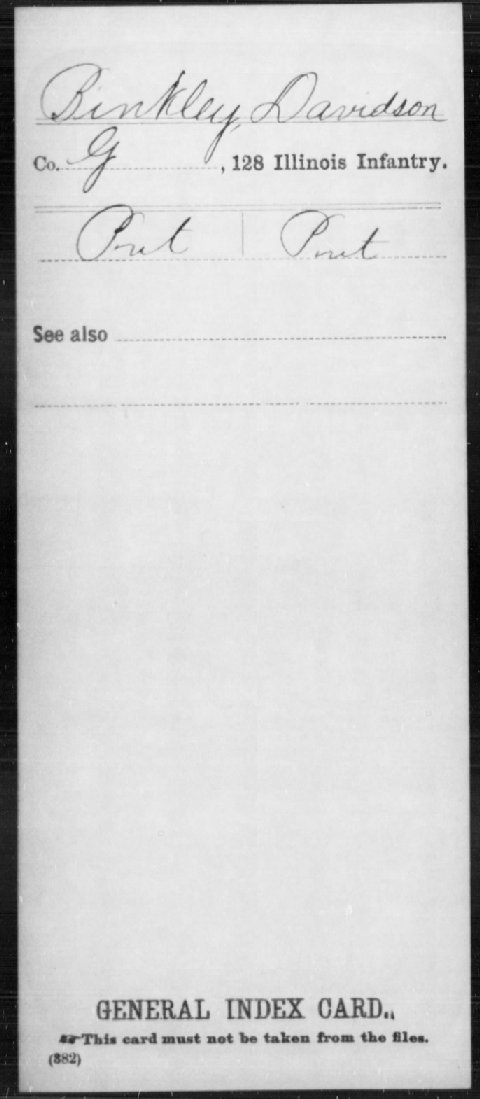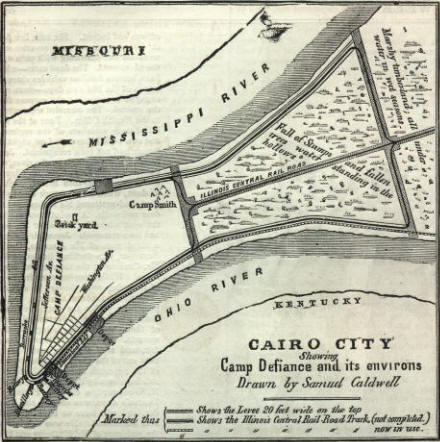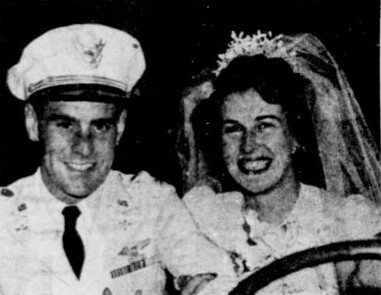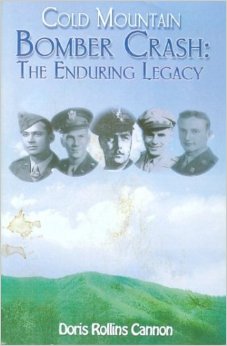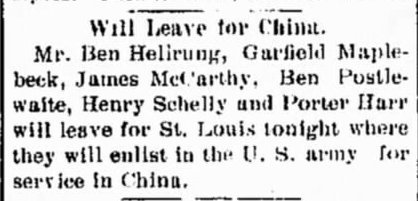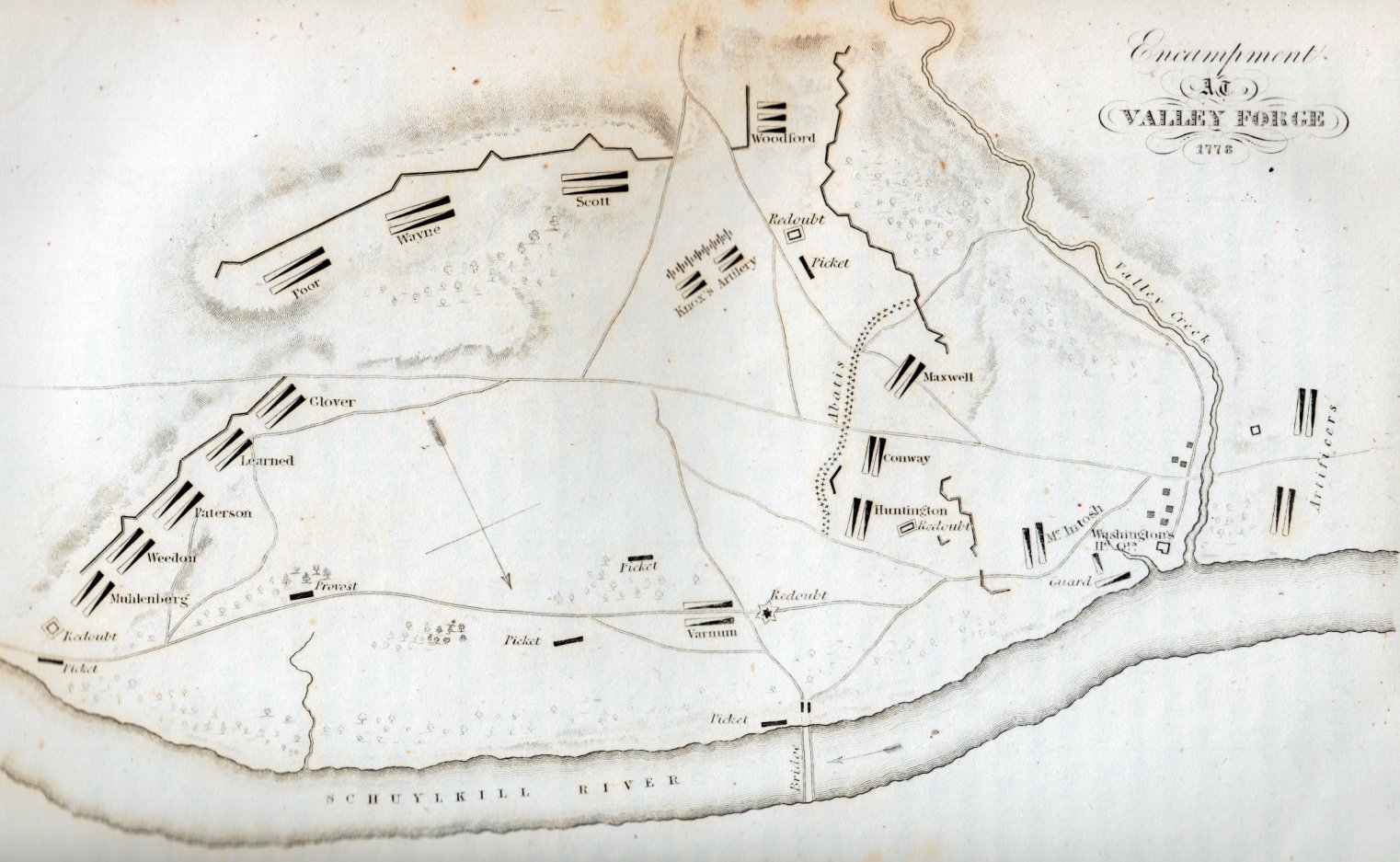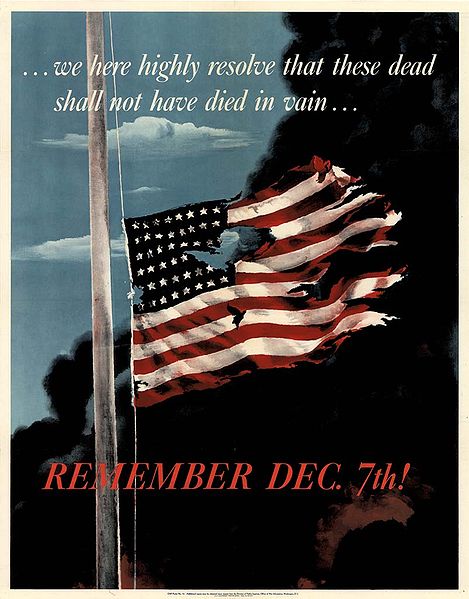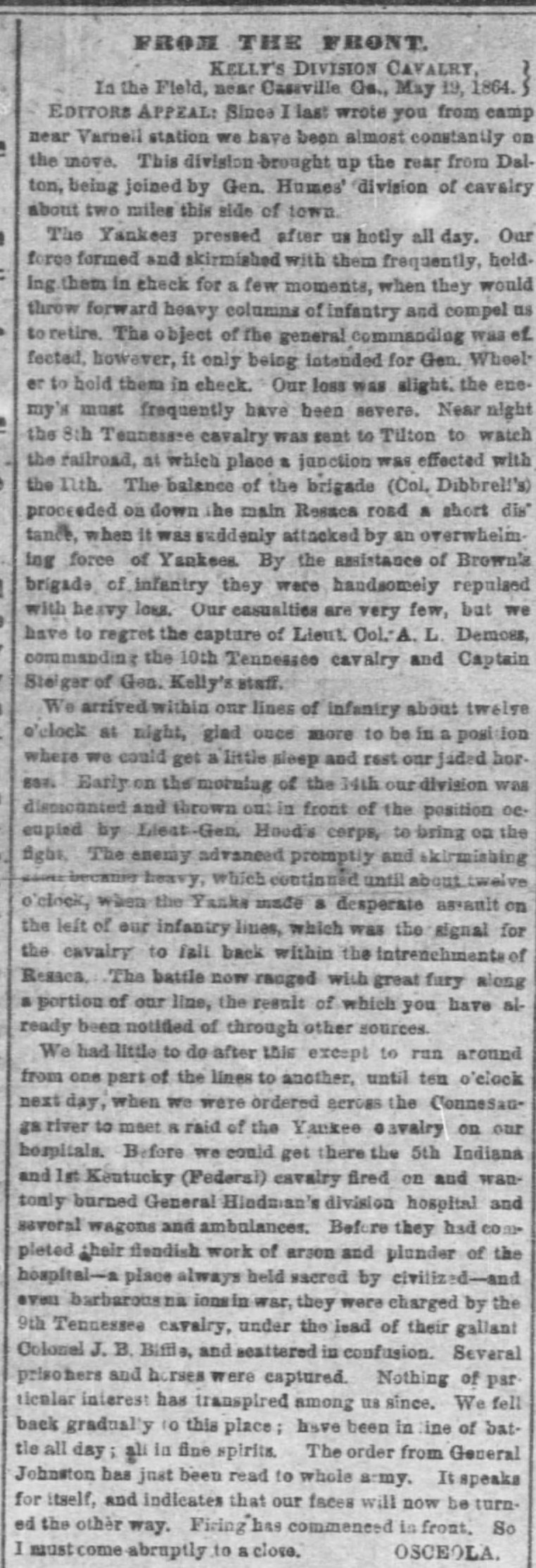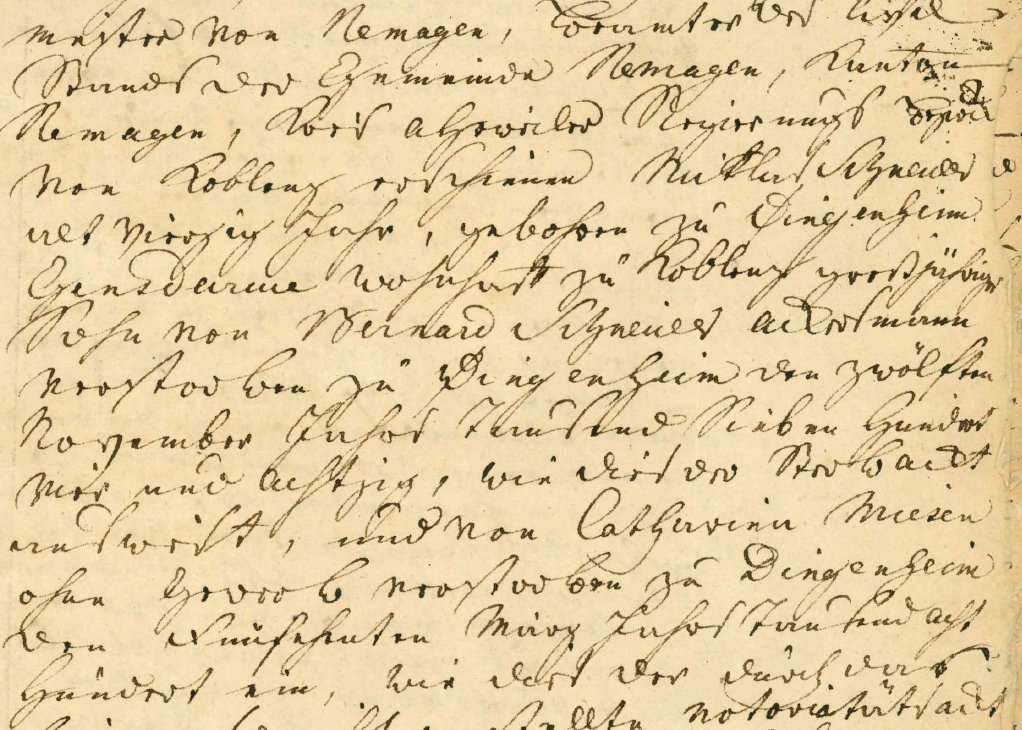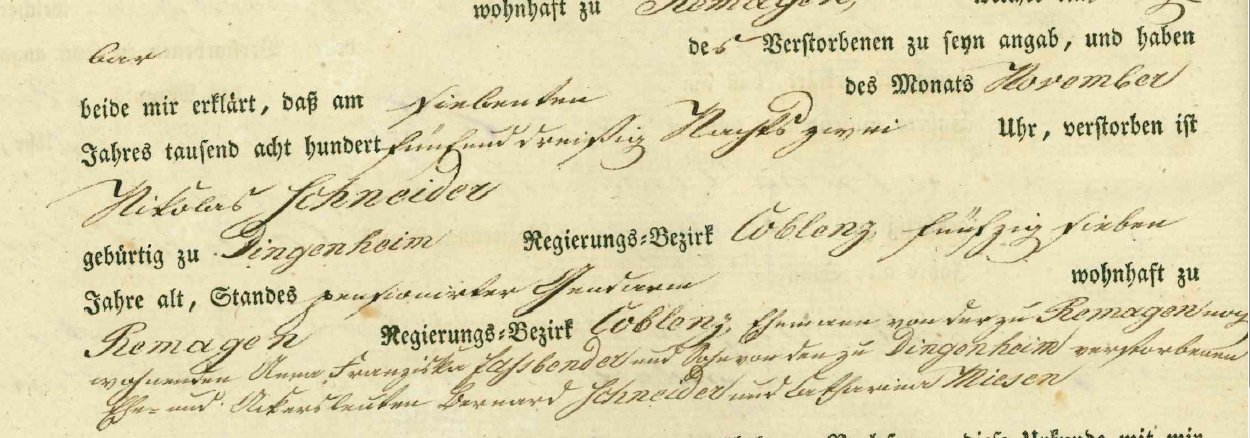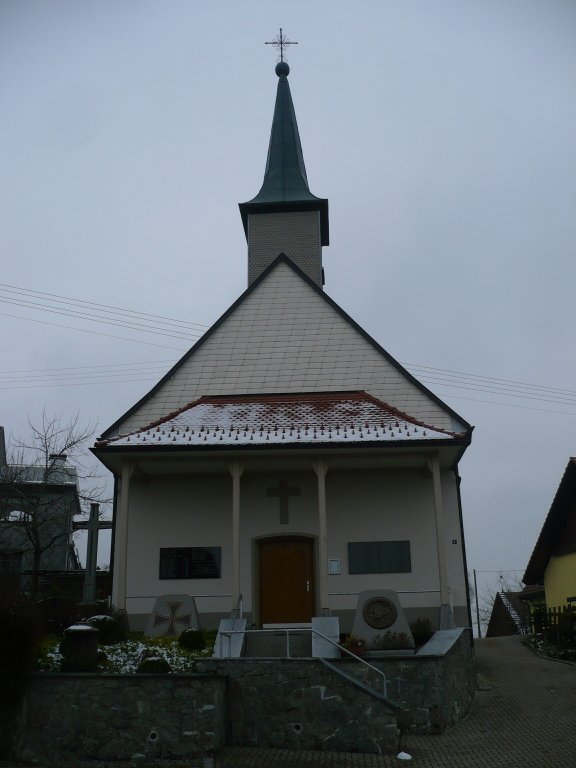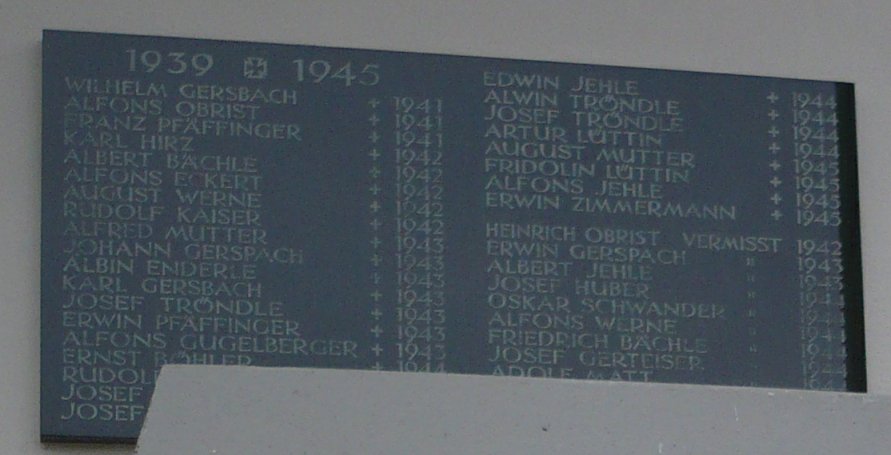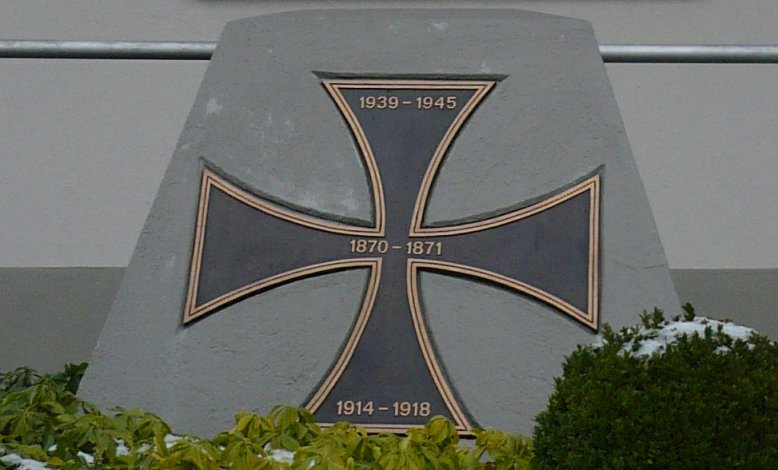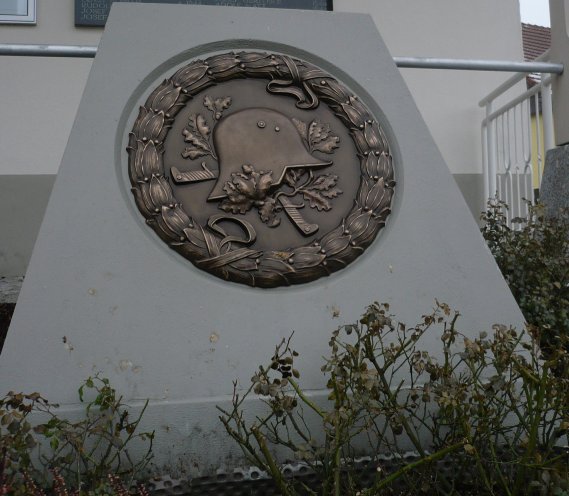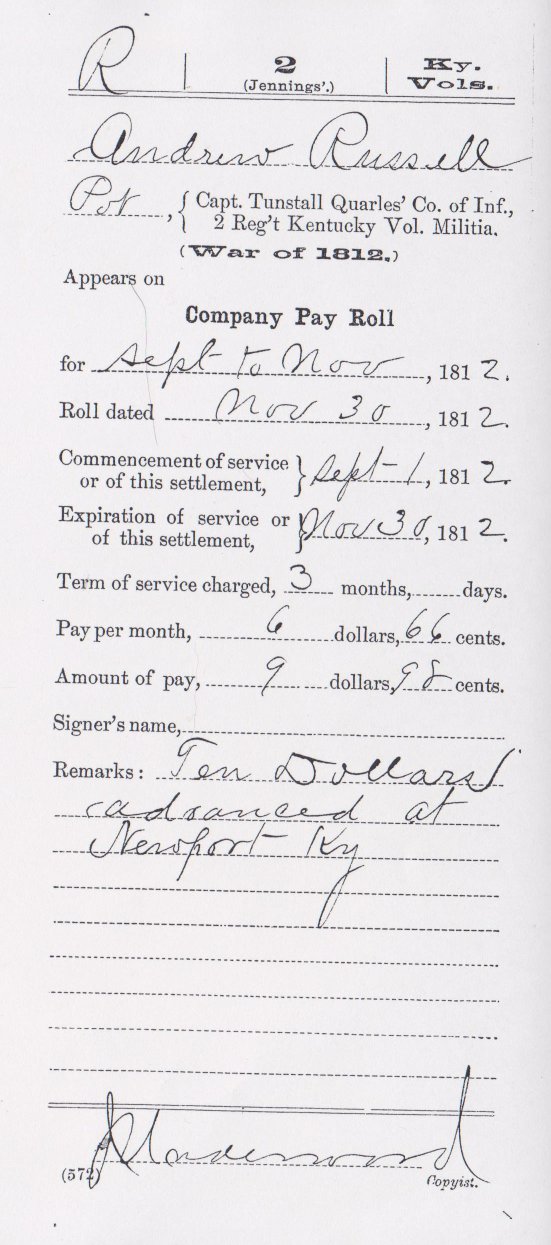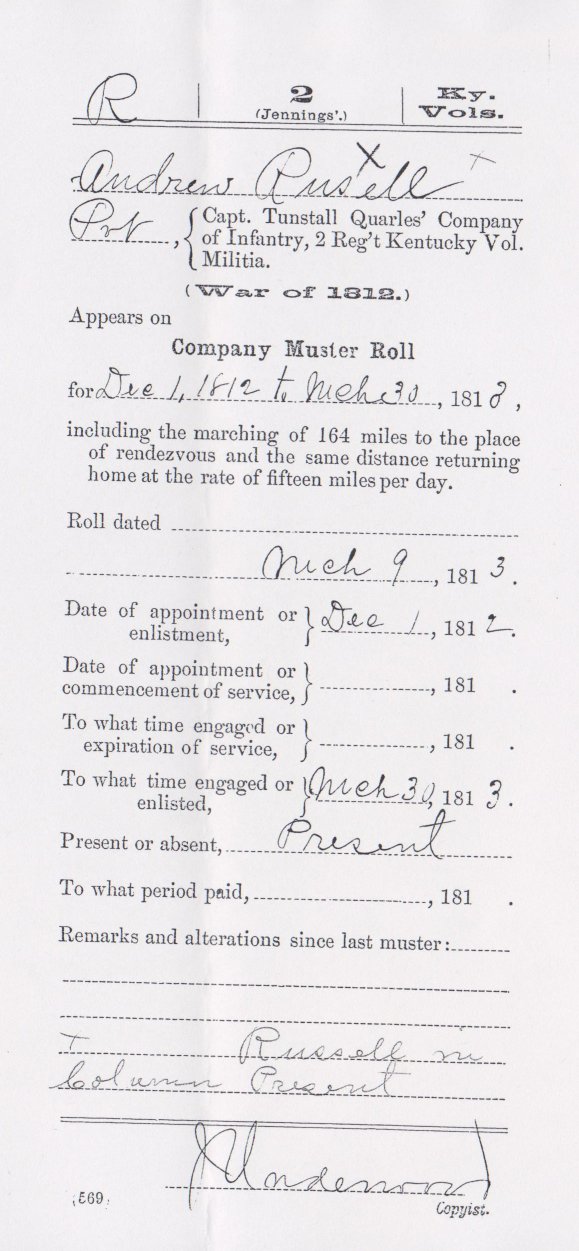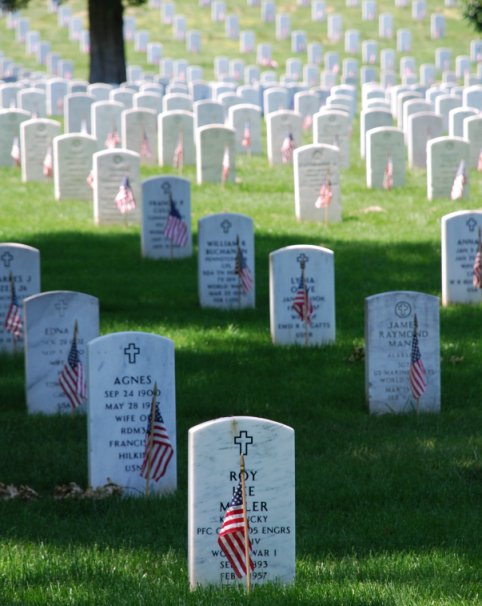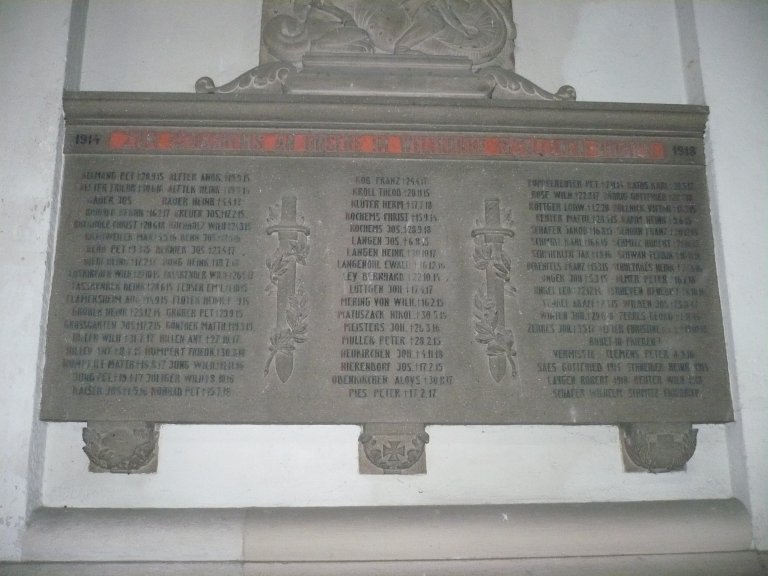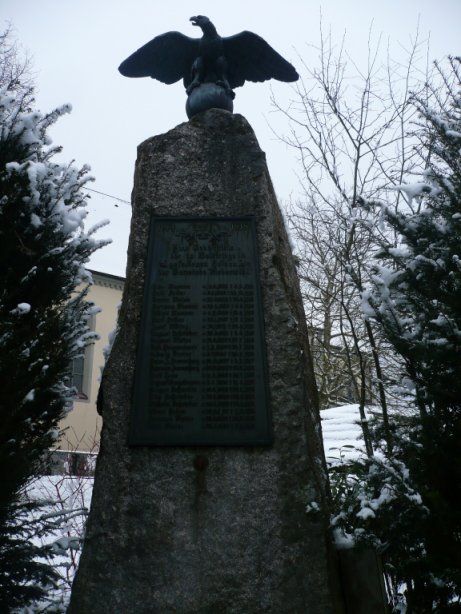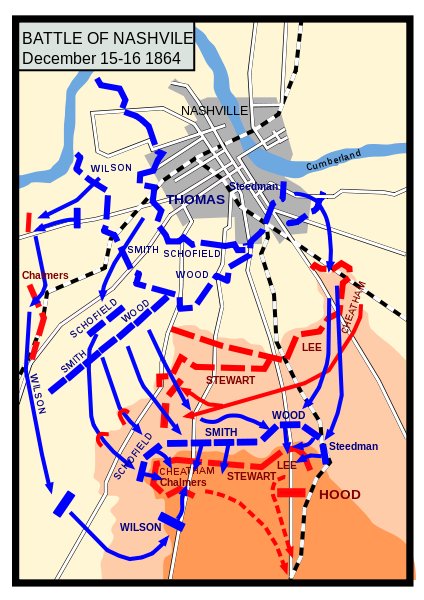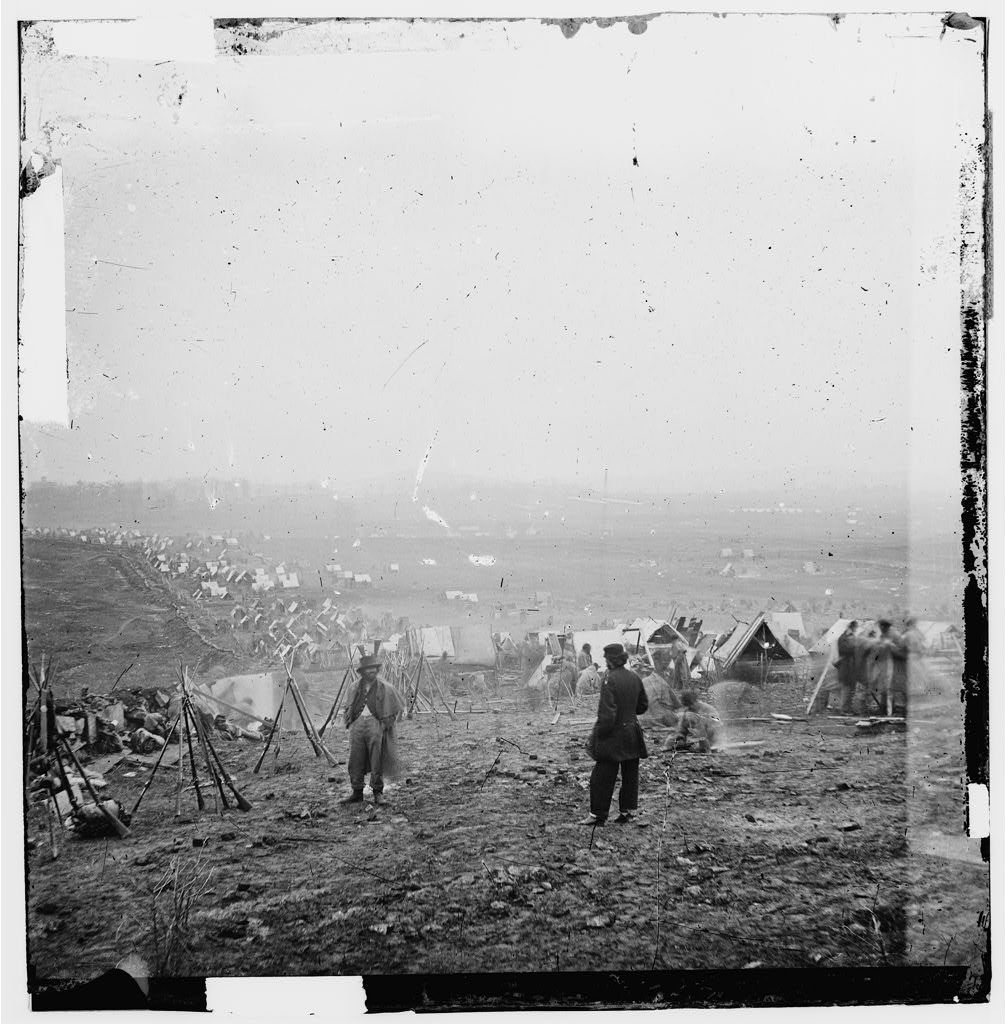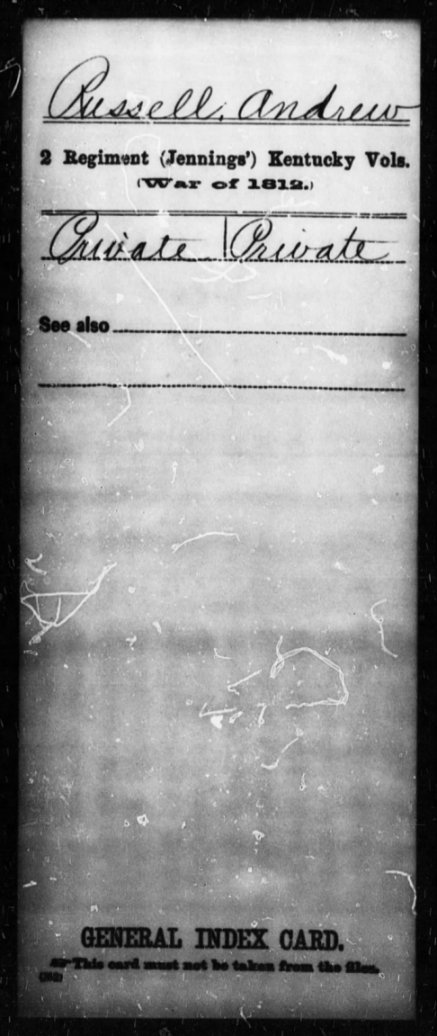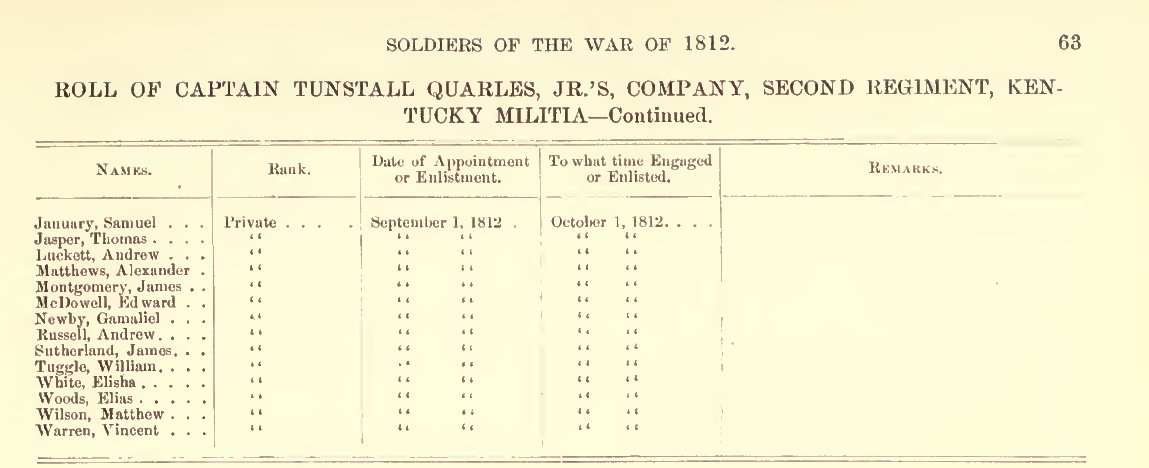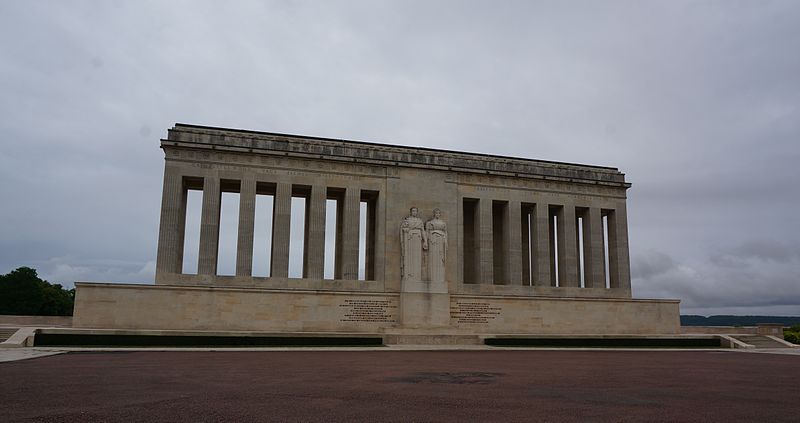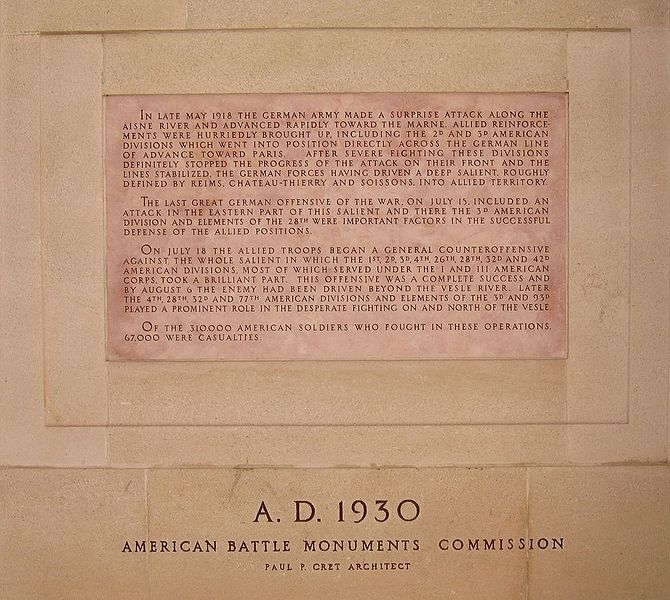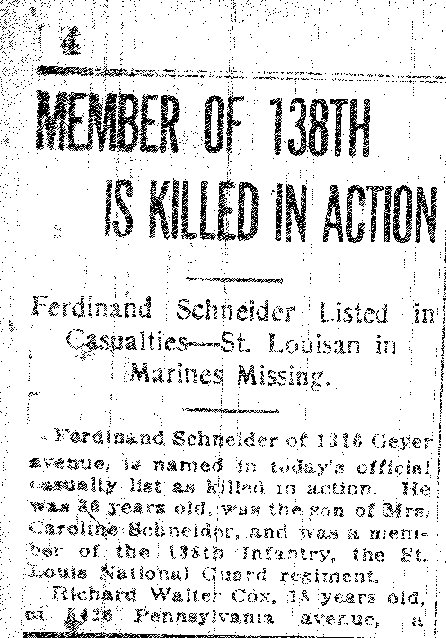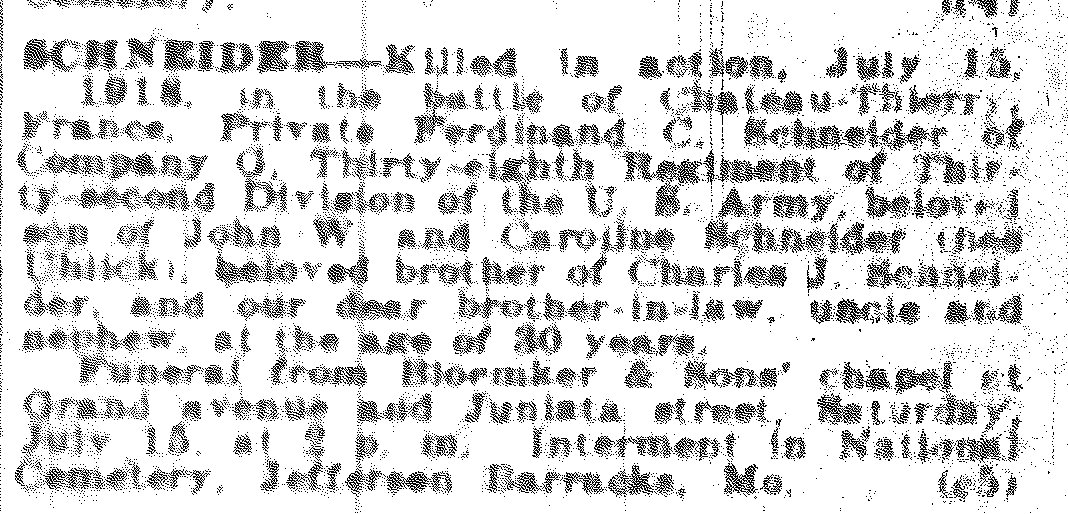Cornelius C. Bogert index card. Organization Index to Pension Files of Veterans Who Served Between 1861 and 1900, compiled 1949 - 1949, documenting the period 1861 - 1942. National Archives and Records Administration. Record Group 15. Microform publication T289. Roll 305. Available from Fold3.
My aunt's great-grandfather Cornelius C. Bogert was a private in Company H, 25th New Jersey Volunteer Infantry Regiment. The company was commanded by Captain James Inglis, Jr.
The regiment was active from September 1, 1862 to June 20, 1863. The men trained in Beverly, Burlington County, New Jersey, and then went to Washington, DC. They fought in the Battle of Fredericksburg (December 11-15, 1862) and the Siege of Suffolk (April 11 - May 4, 1863).
References
25th New Jersey Volunteer Infantry Regiment
Covering genealogy, family history, historical events and places, and anything else related!
Showing posts with label Military Monday. Show all posts
Showing posts with label Military Monday. Show all posts
Monday, January 2, 2017
Monday, December 5, 2016
Military Monday: Battle of Verdun
The Battle of Verdun was one of the longest battles of World War 1. It was fought between the French and German troops, and lasted for nearly 10 months, from 21 February 1916 to 18 December 1916. More than 3/4 of French troops fought in this battle. There were more than 700,000 casualties, at a rate of about 70,000 per month.
Battle of Verdun, 1916. By Gdr [GFDL (http://www.gnu.org/copyleft/fdl.html) or CC-BY-SA-3.0 (http://creativecommons.org/licenses/by-sa/3.0/)]. Available from Wikimedia Commons.
My first cousin three times removed Josef Eschbach was an Obergefreiter (corporal) in the Bavarian Army, Fußartillerie-Bataillon 21. He participated in the Battle of Verdun.
Fußartillerie-Bataillon 21. 15106-Kriegstammrolle. Ancestry.com. Bavaria, Germany, WWI Personnel Rosters, 1914-1918 [database on-line]. Provo, UT, USA: Ancestry.com Operations, Inc., 2010. Original data: Kriegsstammrollen, 1914-1918. Bavarian State Archives. Department IV, War Archive, Munich.
References
Battle of Verdun
The Battle of Verdun
Battle of Verdun, 1916. By Gdr [GFDL (http://www.gnu.org/copyleft/fdl.html) or CC-BY-SA-3.0 (http://creativecommons.org/licenses/by-sa/3.0/)]. Available from Wikimedia Commons.
My first cousin three times removed Josef Eschbach was an Obergefreiter (corporal) in the Bavarian Army, Fußartillerie-Bataillon 21. He participated in the Battle of Verdun.
Fußartillerie-Bataillon 21. 15106-Kriegstammrolle. Ancestry.com. Bavaria, Germany, WWI Personnel Rosters, 1914-1918 [database on-line]. Provo, UT, USA: Ancestry.com Operations, Inc., 2010. Original data: Kriegsstammrollen, 1914-1918. Bavarian State Archives. Department IV, War Archive, Munich.
References
Battle of Verdun
The Battle of Verdun
Monday, August 29, 2016
Military Monday: Kentucky in the War of 1812
During the War of 1812, my 5th-great-grandfather Andrew Russell was a private in Tunstall Quarles' Company of Infantry, 2nd Regiment Kentucky Volunteer Militia. Although he is not mentioned by name in the clippings below, they provide more information about his experiences.
Captain Quarles' regiment is specifically mentioned in this report of army movements.
Andrew was one of the 600 men in Col. Jennings' regiment.
Andrew's regiment built Fort Jennings.
Kentucky Gazette, 8 September 1812, page 3. Kentucky Digital Library.
Captain Quarles' regiment is specifically mentioned in this report of army movements.
Kentucky Gazette, 15 September 1812, page 13. Kentucky Digital Library.
Andrew was one of the 600 men in Col. Jennings' regiment.
Hornets' Nest (Murfreesboro, NC), 5 November 1812, page 2
Andrew's regiment built Fort Jennings.
Monday, August 22, 2016
Military Monday: Joshua Hunt Thomas, Musician
Spicer, William Arnold. History of the Ninth and Tenth Regiments Rhode Island Volunteers, and the Tenth Rhode Island Battery, in the Union Army in 1862. Providence, RI: Snow & Franham, 1892. Pages 396-397. Available from Internet Archive.
Joshua Hunt Thomas, the husband of my 3rd-great-grandfather's sister Catherine Bennett Winters, was a musician during the Civil War. He enlisted on 26 May 1862.
Joshua was in Company C, 10th Rhode Island Infantry. The regiment was mustered into service on 26 May 1862 in Providence, Rhode Island, and then moved to Washington, DC from 27 May-29 May 1862. The regiment was on duty at Camp Frieze, Tennallytown until 26 June 1862.
Spicer, William Arnold. History of the Ninth and Tenth Regiments Rhode Island Volunteers, and the Tenth Rhode Island Battery, in the Union Army in 1862. Providence, RI: Snow & Franham, 1892. Page 199. Available from Internet Archive.
Company C was then assigned to garrison duty at Fort Cameron.
Joshua served for just over a month. He was discharged due to disability on 7 July 1862, and he mustered out on 8 July 1862 at Battery Cameron, DC.
References
Historical Data Systems, comp. U.S., Civil War Soldier Records and Profiles, 1861-1865 [database on-line]. Provo, UT, USA: Ancestry.com Operations Inc, 2009.
Spicer, William Arnold. History of the Ninth and Tenth Regiments Rhode Island Volunteers, and the Tenth Rhode Island Battery, in the Union Army in 1862. Providence, RI: Snow & Franham, 1892. Available from Internet Archive.
10th Rhode Island Infantry
Union Regimental Histories: Rhode Island. Civil War Archive.
Joshua Hunt Thomas, the husband of my 3rd-great-grandfather's sister Catherine Bennett Winters, was a musician during the Civil War. He enlisted on 26 May 1862.
Joshua was in Company C, 10th Rhode Island Infantry. The regiment was mustered into service on 26 May 1862 in Providence, Rhode Island, and then moved to Washington, DC from 27 May-29 May 1862. The regiment was on duty at Camp Frieze, Tennallytown until 26 June 1862.
Spicer, William Arnold. History of the Ninth and Tenth Regiments Rhode Island Volunteers, and the Tenth Rhode Island Battery, in the Union Army in 1862. Providence, RI: Snow & Franham, 1892. Page 199. Available from Internet Archive.
Company C was then assigned to garrison duty at Fort Cameron.
Joshua served for just over a month. He was discharged due to disability on 7 July 1862, and he mustered out on 8 July 1862 at Battery Cameron, DC.
References
Historical Data Systems, comp. U.S., Civil War Soldier Records and Profiles, 1861-1865 [database on-line]. Provo, UT, USA: Ancestry.com Operations Inc, 2009.
Spicer, William Arnold. History of the Ninth and Tenth Regiments Rhode Island Volunteers, and the Tenth Rhode Island Battery, in the Union Army in 1862. Providence, RI: Snow & Franham, 1892. Available from Internet Archive.
10th Rhode Island Infantry
Union Regimental Histories: Rhode Island. Civil War Archive.
Monday, May 30, 2016
Military Monday: Memorial Day
Today is the day that we honor those who made the ultimate sacrifice while serving our country. I am remembering family members who died while in service.
My great-grandfather's first cousin Ferdinand Constand Schneider (4 November 1887 - 15 July 1918) was killed in action during World War I at the Battle of Château-Thierry. He was the son of a German immigrant, and died fighting against the Germans.
Photo from page 165, Missouri - Soldiers of the Great War, compiled by W. M. Haulsee, F. G. Howe, and A. C. Doyle. Washington, DC: Soldiers Record Publishing Association, 1920. Available online at http://www.usgwarchives.net/mo/wwi/missourisoldies-greatwar.htm.
The map below shows the Western Front of the war at the time that he was killed.
Thomas J. Tarkington, whom I suspect was my 3rd-great-grandfather Joseph Tarkington's brother, was killed in the Battle of Buena Vista (23 February 1847) during the Mexican War.
Indexes to the Carded Records of Soldiers Who Served in Volunteer Organizations During the Mexican War, compiled 1899 - 1927, documenting the period 1846 - 1848. Thomas J. Tarkinton, Wheeler's Co., 2 Illinois Foot Vols. (Bissell's), Mexican War. NARA M616. Available from Fold3.
Although my 3rd-great-grandfather Davidson Binkley did not die in battle, he was serving his country when he died. He was a private in Company G, 128th Illinois Infantry during the Civil War. He was stationed at Cairo, Alexander County, Illinois during the winter of 1862-1863. He died of measles on 9 January 1863.
Index to Compiled Service Records of Volunteer Union Soldiers Who Served in Organizations from the State of Illinois. Davidson Binkley, Company G, 128th Illinois Infantry. NARA M539. Available from Fold3.
Fred Logan Trickey, Jr., the husband of my second cousin once removed Peggy Lorraine Clark, was one of five World War II heroes that died when B-25 bomber 227 crashed on Cold Mountain, Haywood County, North Carolina on 13 September 1946.
Cannon, Doris Rollins. Cold Mountain Bomber Crash: The Enduring Legacy. Printed by Edwards Brothers, 2005. ISBN: 0-9772101-0-3
My great-grandfather's first cousin Ferdinand Constand Schneider (4 November 1887 - 15 July 1918) was killed in action during World War I at the Battle of Château-Thierry. He was the son of a German immigrant, and died fighting against the Germans.
Photo from page 165, Missouri - Soldiers of the Great War, compiled by W. M. Haulsee, F. G. Howe, and A. C. Doyle. Washington, DC: Soldiers Record Publishing Association, 1920. Available online at http://www.usgwarchives.net/mo/wwi/missourisoldies-greatwar.htm.
The map below shows the Western Front of the war at the time that he was killed.
Chicago Daily Tribune, 16 July 1918, page 2
Thomas J. Tarkington, whom I suspect was my 3rd-great-grandfather Joseph Tarkington's brother, was killed in the Battle of Buena Vista (23 February 1847) during the Mexican War.
Indexes to the Carded Records of Soldiers Who Served in Volunteer Organizations During the Mexican War, compiled 1899 - 1927, documenting the period 1846 - 1848. Thomas J. Tarkinton, Wheeler's Co., 2 Illinois Foot Vols. (Bissell's), Mexican War. NARA M616. Available from Fold3.
Map of Battle of Buena Vista. Available from Wikimedia Commons.
Although my 3rd-great-grandfather Davidson Binkley did not die in battle, he was serving his country when he died. He was a private in Company G, 128th Illinois Infantry during the Civil War. He was stationed at Cairo, Alexander County, Illinois during the winter of 1862-1863. He died of measles on 9 January 1863.
Index to Compiled Service Records of Volunteer Union Soldiers Who Served in Organizations from the State of Illinois. Davidson Binkley, Company G, 128th Illinois Infantry. NARA M539. Available from Fold3.
Harper's Weekly, 1 June 1861, p. 350. Available from Son of the South.
Fred Logan Trickey, Jr., the husband of my second cousin once removed Peggy Lorraine Clark, was one of five World War II heroes that died when B-25 bomber 227 crashed on Cold Mountain, Haywood County, North Carolina on 13 September 1946.
Fred and Peggy (Clark) Trickey. Milwaukee Journal, 10 October 1943.
Cannon, Doris Rollins. Cold Mountain Bomber Crash: The Enduring Legacy. Printed by Edwards Brothers, 2005. ISBN: 0-9772101-0-3
Monday, May 2, 2016
Military Monday: The Boxer Rebellion
On 2 August 1900, my great-grandmother's brother Garfield Graham (also known as Garfield Mapplebeck) and five other men left Alton, Madison County, Illinois and headed to St. Louis, Missouri. They intended to enlist in the United States Army and serve in China.
The Boxer Rebellion was taking place in China at this time. A Chinese secret society called I-ho-ch'uan (Society of Righteous and Harmonious Fists) was opposed to the influence of foreigners and the Christian religion. They became known in English as the Boxers because they practiced martial arts. The Boxers attacked and killed missionaries and other foreigners, as well as Chinese Christians.
The Eight-Nation Alliance was formed in response to the Boxer Rebellion. It consisted of the British Empire, the United States, Japan, Russia, Germany, France, Italy, and Austria-Hungary. The U.S. Army, Navy, and Marines participated in the China Relief Expedition and attempted to rescue United States citizens and other foreign nationals.
In June 1900, the telegraph line between Beijing and Tientsin was cut, and the railway line between the two cities was destroyed. Violence in Beijing increased. An international expedition led by Edward Seymour was sent to Beijing on 10 June 1900, but was forced to retreat to Tientsin after being defeated by the Chinese Army.
In early August 1900, about 19,000 soldiers from the Eight-Nation Alliance began moving from Tientsin to Beijing. They arrived in the Outer City on 14 August 1900. On 15 August 1900, they entered the Inner City and occupied Beijing.
Route of the Relief Force of the Eight Nation Alliance, China, 1900. Retouched by Smallchief. Original image by U.S. Department of the Army (Military Review Magazine, 1983). Public domain. Available from Wikimedia Commons.
The United States did not participate in subsequent military operations. Most U.S. troops had been sent to Manila by the following winter.
Given the timing of events, Garfield probably did not serve in China as he had intended to do. I am not sure if he even ended up enlisting in the army. According to his 1930 U.S. census enumeration, he was not a veteran. However, since I do not know who provided the information to the census taker, the information could be incorrect. He was still in Alton in 1901, working at the glass company, so it seems likely that he did not end up enlisting. But if the American role in the Boxer Rebellion had continued for a longer period, perhaps he would have gone to China.
References
Boxer Rebellion
The Boxer Rebellion in China 1898-1900
China (Boxer Rebellion), 1900-01
China Relief Expedition
Eight-Nation Alliance
Leonhard, Robert. The China Relief Expedition: Joint Coalition Warfare in China, Summer 1900.
Seymour Expedition
Alton Evening Telegraph, 2 August 1900, page 3
The Boxer Rebellion was taking place in China at this time. A Chinese secret society called I-ho-ch'uan (Society of Righteous and Harmonious Fists) was opposed to the influence of foreigners and the Christian religion. They became known in English as the Boxers because they practiced martial arts. The Boxers attacked and killed missionaries and other foreigners, as well as Chinese Christians.
The Eight-Nation Alliance was formed in response to the Boxer Rebellion. It consisted of the British Empire, the United States, Japan, Russia, Germany, France, Italy, and Austria-Hungary. The U.S. Army, Navy, and Marines participated in the China Relief Expedition and attempted to rescue United States citizens and other foreign nationals.
In June 1900, the telegraph line between Beijing and Tientsin was cut, and the railway line between the two cities was destroyed. Violence in Beijing increased. An international expedition led by Edward Seymour was sent to Beijing on 10 June 1900, but was forced to retreat to Tientsin after being defeated by the Chinese Army.
In early August 1900, about 19,000 soldiers from the Eight-Nation Alliance began moving from Tientsin to Beijing. They arrived in the Outer City on 14 August 1900. On 15 August 1900, they entered the Inner City and occupied Beijing.
Route of the Relief Force of the Eight Nation Alliance, China, 1900. Retouched by Smallchief. Original image by U.S. Department of the Army (Military Review Magazine, 1983). Public domain. Available from Wikimedia Commons.
The United States did not participate in subsequent military operations. Most U.S. troops had been sent to Manila by the following winter.
Given the timing of events, Garfield probably did not serve in China as he had intended to do. I am not sure if he even ended up enlisting in the army. According to his 1930 U.S. census enumeration, he was not a veteran. However, since I do not know who provided the information to the census taker, the information could be incorrect. He was still in Alton in 1901, working at the glass company, so it seems likely that he did not end up enlisting. But if the American role in the Boxer Rebellion had continued for a longer period, perhaps he would have gone to China.
References
Boxer Rebellion
The Boxer Rebellion in China 1898-1900
China (Boxer Rebellion), 1900-01
China Relief Expedition
Eight-Nation Alliance
Leonhard, Robert. The China Relief Expedition: Joint Coalition Warfare in China, Summer 1900.
Seymour Expedition
Monday, February 22, 2016
Military Monday: Encampment at Valley Forge
Encampment at Valley Forge, 1778. Steel engraving by George W. Boynton, 1830. In Sparkes, Jared. The Life of George Washington. Boston: Tappen & Dennet, 1843. Available from https://en.wikipedia.org/wiki/File:Encampment_at_Valley_Forge_1778.jpg
Since today is George Washington's birthday, it seemed an appropriate time to post this map of the encampment at Valley Forge, 1778. My 5th-great-grandfather Stephen Mayo and his brother Benjamin Mayo were at Valley Forge with George Washington. The Mayo brothers were in the 14th Virginia Regiment, which was part of Weedon's Brigade. Their encampment is shown on the lower left side of the map, second from the bottom. Washington was located on the other side of the encampment.
Since today is George Washington's birthday, it seemed an appropriate time to post this map of the encampment at Valley Forge, 1778. My 5th-great-grandfather Stephen Mayo and his brother Benjamin Mayo were at Valley Forge with George Washington. The Mayo brothers were in the 14th Virginia Regiment, which was part of Weedon's Brigade. Their encampment is shown on the lower left side of the map, second from the bottom. Washington was located on the other side of the encampment.
Monday, December 7, 2015
Military Monday: Remember December 7
"Remember December 7th" U.S. Government propaganda poster of 1942. United States Office of War Information. (United States National Archives) [Public domain]. Available from Wikimedia Commons.
Monday, November 30, 2015
Military Monday: Lieutenant Colonel DeMoss Captured During Atlanta Campaign
The 24 May 1864 issue of the Memphis Daily Appeal reported on the Atlanta Campaign. The 10th Regiment Tennessee Cavalry was involved in this campaign. My 3rd-great-grandfather Joseph Tarkington and my 3rd-great-grandfather's brother John G. Gatlin were privates in the 10th Regiment, Tennessee Cavalry, Company D, although they were not present during the Atlanta Campaign. Lieutenant Colonel DeMoss, whose capture was reported in the article below, was a cousin of mine.
Memphis Daily Appeal, 24 May 1864, page 2
Monday, October 19, 2015
Military Monday: Gendarmerie
A gendarmerie is a paramilitary police force. France's National Gendarmerie (Gendarmerie nationale) was created on 16 February 1791, when the Maréchaussée Royale was renamed. During the French Revolution, the gendarmerie was an auxiliary to France's National Guard. Small brigades of the gendarmerie were spread out over France. The gendarmes (men in the gendarmerie) were usually mounted. They were housed in barracks. The brigades formed companies, which covered departments. The companies formed squadrons, and squadrons formed legions.
As Napoleon conquered areas of Europe, the gendarmerie spread. It was introduced in the Rhineland region of Germany in 1798. By 1809, there were 15,500 men in the gendarmerie; 527 of them were in the Rhineland. The 25th gendarmerie legion consisted of four departments in the Rhineland, which were located in Köln (Cologne), Koblenz, Mainz, and Trier. The departments were patrolled by two squadrons. The gendarmes searched for draft dodgers and deserters. Mayors, prefects, and sub-prefects could call on them if they anticipated disorder in their communities. Approximately one quarter of the men were local; the others were French, but were supposed to know German.
On 20 December 1808, the French troops left the Rhineland. However, the gendarmerie continued. The remaining gendarmes served the Grand Duchy of Hesse-Darmstadt.
My 4th-great-grandfather Nikolaus Schneider was a gendarme. He was born about 1777 in Düngenheim, Cochem-Zell, Rheinland-Pfalz (Rhineland-Palatinate), Germany. When he married in 1818, he was a gendarme stationed in Koblenz.
Excerpt from the marriage record of Nikolaus Schneider and Anna Maria Fasbender, 6 January 1818. Remagen, Ahrweiler, Rheinland-Pfalz. Stadtarchiv Remagen.
Excerpt from the death record of Nikolaus Schneider, 7 November 1835. Remagen, Ahrweiler, Rheinland-Pfalz. Stadtarchiv Remagen. His profession was "Standes preußischer Gendarm" (former Prussian gendarme).
Koblenz (Regierungsbezirk). Amtsblatt der Preußischen Regierung zu Koblenz: Jahrgang 1817. Section on security and police from the official journal of the Prussian government to Koblenz, 1817. Page 95. Available from Google Books.
References
Broers, Michael. The Napoleonic Police and their Legacy
Gendarmerie
National Gendarmerie
Polizei Rheinland-Pfalz - Geschichte der Polizei
Rowe, Michael. From Reich to State: The Rhineland in the Revolutionary Age, 1780-1830. New York: Cambridge University Press, 2003.
As Napoleon conquered areas of Europe, the gendarmerie spread. It was introduced in the Rhineland region of Germany in 1798. By 1809, there were 15,500 men in the gendarmerie; 527 of them were in the Rhineland. The 25th gendarmerie legion consisted of four departments in the Rhineland, which were located in Köln (Cologne), Koblenz, Mainz, and Trier. The departments were patrolled by two squadrons. The gendarmes searched for draft dodgers and deserters. Mayors, prefects, and sub-prefects could call on them if they anticipated disorder in their communities. Approximately one quarter of the men were local; the others were French, but were supposed to know German.
On 20 December 1808, the French troops left the Rhineland. However, the gendarmerie continued. The remaining gendarmes served the Grand Duchy of Hesse-Darmstadt.
My 4th-great-grandfather Nikolaus Schneider was a gendarme. He was born about 1777 in Düngenheim, Cochem-Zell, Rheinland-Pfalz (Rhineland-Palatinate), Germany. When he married in 1818, he was a gendarme stationed in Koblenz.
Excerpt from the marriage record of Nikolaus Schneider and Anna Maria Fasbender, 6 January 1818. Remagen, Ahrweiler, Rheinland-Pfalz. Stadtarchiv Remagen.
Excerpt from the death record of Nikolaus Schneider, 7 November 1835. Remagen, Ahrweiler, Rheinland-Pfalz. Stadtarchiv Remagen. His profession was "Standes preußischer Gendarm" (former Prussian gendarme).
Koblenz (Regierungsbezirk). Amtsblatt der Preußischen Regierung zu Koblenz: Jahrgang 1817. Section on security and police from the official journal of the Prussian government to Koblenz, 1817. Page 95. Available from Google Books.
References
Broers, Michael. The Napoleonic Police and their Legacy
Gendarmerie
National Gendarmerie
Polizei Rheinland-Pfalz - Geschichte der Polizei
Rowe, Michael. From Reich to State: The Rhineland in the Revolutionary Age, 1780-1830. New York: Cambridge University Press, 2003.
Labels:
France,
Germany,
Koblenz,
Military Monday,
Schneider
Monday, October 5, 2015
Military Monday: War Memorials, St. Karl Borromaeuskapelle, Rotzel, Baden, Germany
St. Karl Borromaeuskapelle in Rotzel, Laufenburg, Waldshut, Baden-Württemberg, Germany has two memorial plaques which list the names of local men who died or went missing during the Franco-Prussian War, World War I, and World War II.
There are also two markers. One has an iron cross, and the other has a wreath with a helmet in the center.
A transcription of the men's names is available at http://www.denkmalprojekt.org/dkm_deutschland/rotzel_wk1u2_bw.htm.
Monday, September 28, 2015
Military Monday: More Information on Andrew Russell, Private in 2nd Regiment Kentucky Volunteer Militia, War of 1812
My 5th-great-grandfather Andrew Russell was a private in Tunstall Quarles' Company of Infantry, 2nd Regiment Kentucky Volunteer Militia during the War of 1812. According to the book Soldiers of the War of 1812, the men in the company were enlisted from 1 September 1812 to 1 October 1812. I recently received Andrew Russell's compiled service record from the National Archives and Records Administration, and found out that he served with the company for a longer period of time. He was enlisted from 1 September 1812 to 30 March 1813.
The 2nd Regiment Kentucky Volunteer Militia Reenactment Group has a unit history on their Web site. By looking at the history and the compiled service record, I can see what Andrew was doing during the War of 1812.
The unit history states that the 2nd Regiment Kentucky Volunteer Militia was formed in Frankfort, Kentucky on 1 September 1812. The regiment marched to Lexington, Kentucky, and then went to Newport Barracks in Newport, Kentucky. The men received 2 months' advance pay at Newport.
The company pay roll dated 30 November 1812 states that Andrew Russell was advanced ten dollars at Newport.
Compiled service record, Andrew Russell, Pvt., Tunstall Quarles' Company of Infantry, 2nd Regiment Kentucky Volunteer Militia, War of 1812. Record Group 94. National Archives, Washington, DC.
By mid-September, the men had arrived at General William Henry Harrison's headquarters in St. Marys, Ohio. They then headed north and constructed Fort Jennings. It was completed in October 1812. They remained at Fort Jennings on garrison duty.
Several months later, the men headed further north, and got as far as Put-in-Bay, Ohio. They were then sent back to Cincinnati, and were discharged in 1813.
According to the company muster roll dated 9 March 1813, the company marched 164 miles to the rendezvous, and 164 miles back. They marched about fifteen miles per day.
Compiled service record, Andrew Russell, Pvt., Tunstall Quarles' Company of Infantry, 2nd Regiment Kentucky Volunteer Militia, War of 1812. Record Group 94. National Archives, Washington, DC.
The 2nd Regiment Kentucky Volunteer Militia Reenactment Group has a unit history on their Web site. By looking at the history and the compiled service record, I can see what Andrew was doing during the War of 1812.
The unit history states that the 2nd Regiment Kentucky Volunteer Militia was formed in Frankfort, Kentucky on 1 September 1812. The regiment marched to Lexington, Kentucky, and then went to Newport Barracks in Newport, Kentucky. The men received 2 months' advance pay at Newport.
The company pay roll dated 30 November 1812 states that Andrew Russell was advanced ten dollars at Newport.
Compiled service record, Andrew Russell, Pvt., Tunstall Quarles' Company of Infantry, 2nd Regiment Kentucky Volunteer Militia, War of 1812. Record Group 94. National Archives, Washington, DC.
By mid-September, the men had arrived at General William Henry Harrison's headquarters in St. Marys, Ohio. They then headed north and constructed Fort Jennings. It was completed in October 1812. They remained at Fort Jennings on garrison duty.
Several months later, the men headed further north, and got as far as Put-in-Bay, Ohio. They were then sent back to Cincinnati, and were discharged in 1813.
According to the company muster roll dated 9 March 1813, the company marched 164 miles to the rendezvous, and 164 miles back. They marched about fifteen miles per day.
Compiled service record, Andrew Russell, Pvt., Tunstall Quarles' Company of Infantry, 2nd Regiment Kentucky Volunteer Militia, War of 1812. Record Group 94. National Archives, Washington, DC.
Monday, May 25, 2015
Military Monday: Memorial Day
Graves at Arlington National Cemetery, Memorial Day 2008. Photo by Remember. Public domain. Available from Wikimedia Commons.
On Memorial Day, I would like to honor those who have died in service, including the following relatives:
Thomas J. Tarkington, who died in the Battle of Buena Vista during the Mexican War
Davidson Binkley, who died of measles while serving in the Union Army during the Civil War
Ferdinand Constand Schneider, who died in the Battle of Château-Thierry during World War I
Fred Logan Trickey, Jr., who died in a B-25 bomber crash in 1946
On Memorial Day, I would like to honor those who have died in service, including the following relatives:
Thomas J. Tarkington, who died in the Battle of Buena Vista during the Mexican War
Davidson Binkley, who died of measles while serving in the Union Army during the Civil War
Ferdinand Constand Schneider, who died in the Battle of Château-Thierry during World War I
Fred Logan Trickey, Jr., who died in a B-25 bomber crash in 1946
Monday, March 9, 2015
Military Monday: World War I Memorial Plaque, Sts. Peter and Paul Catholic Church, Remagen, Germany
Inside Sts. Peter and Paul's Catholic Church in Remagen, Kreis Ahrweiler, Rheinland-Pfalz (Rhineland-Palatinate), Germany, there is a memorial plaque which lists the names of local men who died during World War I. In the bottom section of the last column, names of missing men are listed.
Monday, February 9, 2015
Military Monday: World War I Memorial, Niederwihl, Germany
In Niederwihl, Görwihl, Waldshut, Baden-Württemberg, Germany, there is a memorial for the men of Niedewihl who died in World War I, 1914-1918. The soldiers' names are inscribed in the order of their death dates. The plaque reads Zum Gedächtnis der im Weltkriege gefallenen Helden der Gemeinde Niederwihl (In memory of the fallen World War heroes of the community Niederwihl).
Monday, December 15, 2014
Military Monday: Battle of Nashville
The Battle of Nashville took place on December 15-16, 1864. It was the last major battle of the Civil War. This year is the 150th anniversary of the battle.
After the Battle of Franklin, Lieutenant General John Bell Hood and his Confederate troops pursued Major General George Henry Thomas' Union troops to Nashville. They arrived on December 2. Thomas' troops attacked the Confederates on both the left and the right flanks. The attack on the right was intended to be a diversion. Troops from General James B. Steedman's Provisional Division advanced on the right flank at 8:00 AM on December 15. However, the diversion did not work; Hood realized that the main attack was coming from the left, and he moved some of Lieutenant General Stephen D. Lee's troops to the left flank.
At 10:00 AM the attack on the left flank began. Brigadier General James H. Wilson's cavalry corps and Major General Andrew Jackson Smith's "Detachment of the Army of the Tennessee" headed west and then south. Brigadier General Edward Hatch's cavalry brigade headed to the Belle Meade plantation, where they burned Brigadier General James R. Chalmers' supply wagons. Brigadier General Thomas J. Wood's IV Corps advanced on the Confederate line. The five Confederate redoubts on the left were attacked. The last one to fall was Confederate Redoubt No. 1.
On December 16, Major General Thomas once again utilized the strategy of creating a diversion. Two brigades from General Steedman's provisional division and two brigades from Samuel Beatty's division of Brigadier General Wood's IV Corps attacked Peach Orchard Hill. Hood sent reinforcements to Peach Hill; the Confederate line of defense at Compton's Hill (now Shy's Hill) became thinner.
At 3:30 PM, Brigadier General John McArthur told Smith and Thomas that unless he was given orders not to within the next five minutes, he would attack Compton's Hill and the Confederate line to its east. Shortly afterward, McArthur's three brigades began their attack. They captured 1,533 men, 85 officers (including Brigadier General Thomas Benton Smith), and eight cannons. Colonel William M. Shy was killed.
The Battle of Nashville Preservation Society's events in remembrance of the sesquicentennial of the Battle of Nashville began on Saturday, 13 December 2014, and continue on Monday, 15 December 2014 and Tuesday, 16 December 2014.
Map of the battle of Nashville, 1864. 18 March 2007. By Andrei nacu [GFDL (http://www.gnu.org/copyleft/fdl.html) or CC-BY-SA-3.0 (http://creativecommons.org/licenses/by-sa/3.0/)]. Available from Wikimedia Commons.
Nashville, Tenn. Federal outer line. Photo by Jacob F. Coonley, 16 December 1864. Library of Congress Prints and Photographs Division, Washington, D.C. Available from http://loc.gov/pictures/resource/cwpb.02087/.
References
Battle of Nashville
Battle of Nashville Preservation Society, Inc.
150th Anniversary (1864–2014) This Month in the Civil War: Battle of Nashville
Zimmerman, Mark. Guide to Civil War Nashville. Nashville, TN: Battle of Nashville Preservation Society, 2004.
After the Battle of Franklin, Lieutenant General John Bell Hood and his Confederate troops pursued Major General George Henry Thomas' Union troops to Nashville. They arrived on December 2. Thomas' troops attacked the Confederates on both the left and the right flanks. The attack on the right was intended to be a diversion. Troops from General James B. Steedman's Provisional Division advanced on the right flank at 8:00 AM on December 15. However, the diversion did not work; Hood realized that the main attack was coming from the left, and he moved some of Lieutenant General Stephen D. Lee's troops to the left flank.
At 10:00 AM the attack on the left flank began. Brigadier General James H. Wilson's cavalry corps and Major General Andrew Jackson Smith's "Detachment of the Army of the Tennessee" headed west and then south. Brigadier General Edward Hatch's cavalry brigade headed to the Belle Meade plantation, where they burned Brigadier General James R. Chalmers' supply wagons. Brigadier General Thomas J. Wood's IV Corps advanced on the Confederate line. The five Confederate redoubts on the left were attacked. The last one to fall was Confederate Redoubt No. 1.
On December 16, Major General Thomas once again utilized the strategy of creating a diversion. Two brigades from General Steedman's provisional division and two brigades from Samuel Beatty's division of Brigadier General Wood's IV Corps attacked Peach Orchard Hill. Hood sent reinforcements to Peach Hill; the Confederate line of defense at Compton's Hill (now Shy's Hill) became thinner.
At 3:30 PM, Brigadier General John McArthur told Smith and Thomas that unless he was given orders not to within the next five minutes, he would attack Compton's Hill and the Confederate line to its east. Shortly afterward, McArthur's three brigades began their attack. They captured 1,533 men, 85 officers (including Brigadier General Thomas Benton Smith), and eight cannons. Colonel William M. Shy was killed.
The Battle of Nashville Preservation Society's events in remembrance of the sesquicentennial of the Battle of Nashville began on Saturday, 13 December 2014, and continue on Monday, 15 December 2014 and Tuesday, 16 December 2014.
Map of the battle of Nashville, 1864. 18 March 2007. By Andrei nacu [GFDL (http://www.gnu.org/copyleft/fdl.html) or CC-BY-SA-3.0 (http://creativecommons.org/licenses/by-sa/3.0/)]. Available from Wikimedia Commons.
Nashville, Tenn. Federal outer line. Photo by Jacob F. Coonley, 16 December 1864. Library of Congress Prints and Photographs Division, Washington, D.C. Available from http://loc.gov/pictures/resource/cwpb.02087/.
References
Battle of Nashville
Battle of Nashville Preservation Society, Inc.
150th Anniversary (1864–2014) This Month in the Civil War: Battle of Nashville
Zimmerman, Mark. Guide to Civil War Nashville. Nashville, TN: Battle of Nashville Preservation Society, 2004.
Monday, November 10, 2014
Military Monday: Andrew Russell, Private in 2nd Regiment Kentucky Volunteer Militia, War of 1812
General index card for Andrew Russell. National Archives and Records Administration. Index to the Compiled Military Service Records for the Volunteer Soldiers Who Served During the War of 1812. Washington, D.C.: National Archives and Records Administration. M602. Available from Fold3.com.
Report of the Adjutant General of the State of Kentucky. Soldiers of the War of 1812. Printed by authority of the legislature of Kentucky. Frankfort, KY: E. Polk Johnson, 1891. Available from Internet Archive.
My 5th-great-grandfather Andrew Russell was a private in the 2nd Regiment Kentucky Volunteer Militia during the War of 1812. Colonel William Jennings commanded this regiment. Tunstall Quarles, Jr. armed and equipped one of the companies of the 2nd regiment and became its captain. Andrew Russell was one of the men in his company. He and the other company members enlisted on 1 September 1812. Some of the men, including Andrew Russell and Tunstall Quarles, were from Pulaski County, Kentucky.
Andrew and the rest of his company were enlisted until 1 October 1812. Colonel Jennings' regiment established Fort Jennings, located on the Auglaize River in Ohio, midway between Fort Barbee and Fort Defiance.
Report of the Adjutant General of the State of Kentucky. Soldiers of the War of 1812. Printed by authority of the legislature of Kentucky. Frankfort, KY: E. Polk Johnson, 1891. Available from Internet Archive.
My 5th-great-grandfather Andrew Russell was a private in the 2nd Regiment Kentucky Volunteer Militia during the War of 1812. Colonel William Jennings commanded this regiment. Tunstall Quarles, Jr. armed and equipped one of the companies of the 2nd regiment and became its captain. Andrew Russell was one of the men in his company. He and the other company members enlisted on 1 September 1812. Some of the men, including Andrew Russell and Tunstall Quarles, were from Pulaski County, Kentucky.
Andrew and the rest of his company were enlisted until 1 October 1812. Colonel Jennings' regiment established Fort Jennings, located on the Auglaize River in Ohio, midway between Fort Barbee and Fort Defiance.
Monday, July 14, 2014
Military Monday: Château-Thierry American Monument
Mémorial franco-américain Marne 09617. Photo by GGaritan (Gérald Garitan). Licensed under the Creative Commons Attribution-Share Alike 3.0 Unported license. Image available from Wikimedia Commons.
The Château-Thierry American Monument was erected to commemorate the achievements and sacrifices of American and French troops during the Aisne-Marne and Oise-Aisne offensives. The monument, on Hill 204 overlooking Château-Thierry and the Marne River Valley, was designed by Paul Philippe Cret. Alfred Alphonse Bottiau sculpted the two figures on the west facade which represent the United States and France. General John J. Pershing was present for the inauguration of the monument on 9 October 1937.
Commemorative text on the American Monument of Château-Thierry. Photo by Zeugma fr (Antoine Fleury-Gobert). Licensed under the Creative Commons Attribution-Share Alike 3.0 Unported license. Image available from Wikimedia Commons.
My great-grandfather's first cousin Ferdinand Constand Schneider was killed during the Aisne-Marne campaign.
References and Additional Resources
Chateau-Thierry American Monument
Chateau-Thierry Monument (American Battle Monuments Commission)
Monuments of Château-Thierry Area (American Remembrance)
An Hour from Paris: Chateau Thierry’s American WWI Sights (photolog)
The Château-Thierry American Monument was erected to commemorate the achievements and sacrifices of American and French troops during the Aisne-Marne and Oise-Aisne offensives. The monument, on Hill 204 overlooking Château-Thierry and the Marne River Valley, was designed by Paul Philippe Cret. Alfred Alphonse Bottiau sculpted the two figures on the west facade which represent the United States and France. General John J. Pershing was present for the inauguration of the monument on 9 October 1937.
Commemorative text on the American Monument of Château-Thierry. Photo by Zeugma fr (Antoine Fleury-Gobert). Licensed under the Creative Commons Attribution-Share Alike 3.0 Unported license. Image available from Wikimedia Commons.
My great-grandfather's first cousin Ferdinand Constand Schneider was killed during the Aisne-Marne campaign.
References and Additional Resources
Chateau-Thierry American Monument
Chateau-Thierry Monument (American Battle Monuments Commission)
Monuments of Château-Thierry Area (American Remembrance)
An Hour from Paris: Chateau Thierry’s American WWI Sights (photolog)
Monday, June 23, 2014
Military Monday: 4th Australian Field Ambulance, World War I
Group portrait of the 4th Australian Field Ambulance, Steenwerck, France, 11 March 1918. Available from the Australian War Memorial.
My first cousin 3 times removed George Arthur Troedson was the son of Ola Peter Troedson, brother of my great-great-grandfather Andreas Troedsson. George was a private in the 4th Australian Field Ambulance. In this photo, he is third from right in the fourth row.
My first cousin 3 times removed George Arthur Troedson was the son of Ola Peter Troedson, brother of my great-great-grandfather Andreas Troedsson. George was a private in the 4th Australian Field Ambulance. In this photo, he is third from right in the fourth row.
Monday, May 26, 2014
Military Monday and 52 Ancestors: #20 Ferdinand Constand Schneider
Photo from page 165, Missouri - Soldiers of the Great War, compiled by W. M. Haulsee, F. G. Howe, and A. C. Doyle. Washington, DC: Soldiers Record Publishing Association, 1920. Available online at http://www.usgwarchives.net/mo/wwi/missourisoldies-greatwar.htm.
Ferdinand Constand Schneider was the son of my great-great-grandfather's brother John William (Johann Wilhelm) Schneider and Caroline Uhlik. He was born in St. Louis, Missouri on 4 November 1887. He and his older brother Carl Joseph (named after his uncle, my great-great-grandfather) were the first generation born in the United States; their father was born in Erpel, Neuwied, Rheinland, Germany and their mother was born in Bohemia.
On 5 June 1917, Ferdinand registered for the World War I draft. At that time, he lived at 1316 Geyer Ave. in St. Louis and was a foreman at St. Louis Cordage Works, Menard & Soulard. His draft card noted that one of his fingers was cut at the first joint. In the 1909 St. Louis city directory he had been listed as a cutter; perhaps he had an accident at work.
Details of Ferdinand's service are provided in World War I Biography and Service Records: Persons Who Enlisted in St. Louis City and County. Addenda: Those Who Died in Service (Missouri Historical Society, 1995). Ferdinand joined the United States Army on September 19, 1917 and was a private in Company I, 354th Infantry. On March 16, 1918 he was transferred to Company G, 38th Infantry 3rd Division, where he was a private and machine gunner. A newspaper clipping in the Missouri Historical Society publication stated that "his last letter derides the Germans for their inaccuracy in shooting. He said that they merely pull the trigger and trust to luck to have the bullets take effect."
Unfortunately the bullets took effect on 15 July 1918 at the Battle of Château-Thierry (Aisne, Picardy, France), when Ferdinand was killed by shell fire. The son of a German immigrant had died fighting against the Germans. His body was transported back to the United States, and he was interred in Jefferson Barracks National Cemetery in Oakville, St. Louis County, Missouri on the fourth anniversary of his death.
St. Louis Post-Dispatch, 26 September 1918, p. 4
St. Louis Post-Dispatch, 12 July 1922. p. 19
Subscribe to:
Posts (Atom)

